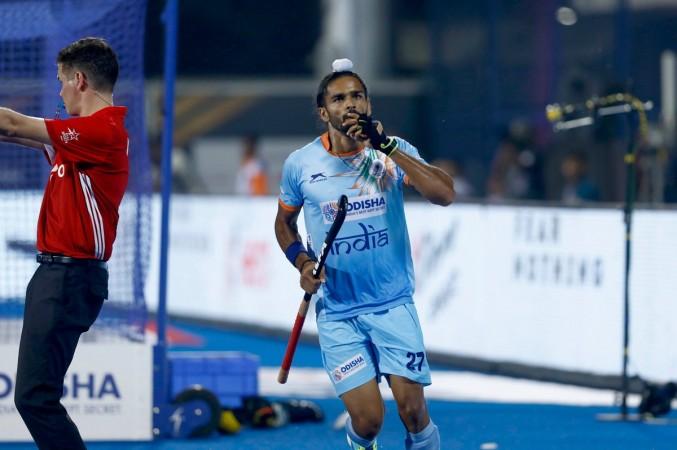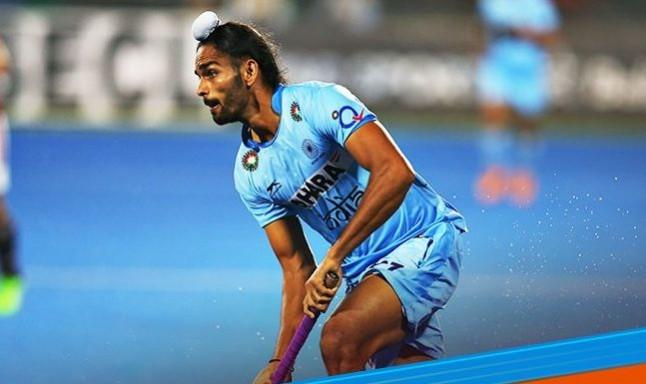
The Indian hockey team is developing a ruthless streak under the coaching of Graham Reid. The cornerstone of this new, exciting style of hockey is the forward line containing great young talent. One of the key forwards, Akashdeep Singh, has made a mark in recent years as a very capable striker.
In an exclusive interview with International Business Times, India, the 24-year old talked about the brand of hockey his side is playing and how they look forward to continue the run of success they have enjoyed in recent times.
Your team is playing a very aggressive brand of hockey. Will this be the strategy in the Olympic qualifiers against Russia also?
Akashdeep: Currently, our preparations are for the tour of Belgium. We are preparing very well and doing a lot of hard work. Our team has performed really well in the last two tournaments. We are coming off a good win in on our last tour – to Tokyo – where a lot of youngsters played.
In our Olympic qualifiers, we will be up against Russia. We have played Russia before, in the World League. We had beaten them by a big margin. So, we have to qualify for the Olympics at any cost and we will do it.
Belgium is the world champion team and have a very strong defensive unit. Will you and your team use new strategies to counter them?
Akashdeep: We have played Belgium on several occasions and have beaten them a couple of times in big tournaments also. According to me, this is a good opportunity before the qualifiers to build up our confidence as we would be playing against a very good side. The mistakes that we made in the last tournament, we have worked upon them to ensure that we don't repeat them in the upcoming matches.

What is your favourite position in the forward line?
Akashdeep: It's not like if I started out as a left-out player, I have to always play in that position. Sometimes the situation in the match is such that I have to play as the center-forward and players like Ramandeep and Sunil then play in the left-out and right-out positions. So, we keep exchanging our positions. Personally, I enjoy playing a little back towards the midfield. I like to stay behind the 25-meter line and play from there. That's my favourite position.
Over the years, Indian players have been criticised for running with the ball and not passing it around as much as needed. Is that something you also had to change in your game?
Akashdeep: Yes, what you are saying is very true. Earlier, we used to play like that. When we got the ball, we would take two or three touches before passing it. But our coach Graham Reid made it clear right from the beginning that we have to play two-touch hockey.
We need to do the pre-screening even before we get the ball and know where our players are. Then, when you stop the ball, quickly pass it on to the next player. So, go for the dodge where you have to and not unnecessarily. Instead, play two-touch hockey and that too, fast.
SV Sunil is making a comeback into the team. He is a senior player in the forward line. How much of a difference would he make to the attacking unit?
Akashdeep: Sunil paaji is a very experienced player. He has been playing for a lot longer than me, so, I have learned a lot from him. He has done a lot of hard work to make a comeback. Now that he is back, I am sure he will do very well and we will get to learn a lot from him.

What is the expectation of your coach from you? Does he want the team to be in a high press most of the time or does he also expect you to, at times, stay a little back and counter the attacks from the opposition?
Akashdeep: Currently, we are playing with a structure wherein, when we don't have the ball, we play with a full press. When we have the ball, we play in a 4-2-2 formation.
So, my position is that of an attacking mid-fielder when I have the ball. In that position, I have to stay a little back, take the ball from the midfielders and transfer it forward to the attackers. You also have to move within the 'D.' These are the combinations that have to be created.
One thing that hasn't changed about Indian hockey is the presence of many forwards from Punjab. Does this mean that the culture of hockey is as strong in Punjab now as it was before?
Akashdeep: The culture of hockey in Punjab is still very strong. I and many other players are from Surjeet Hockey Academy. There is an academy in Ludhiana and one in Amritsar as well. So, there are many academies like these.
There is a very good environment in the Surjeet academy and the coaches are also very good. The atmosphere of training is also very good. Boys keep practising on their own till 11-12 PM in night-time.
Are there other improvements that can be made in Punjab for tapping more talent?
Akashdeep: Punjab, like what the Odisha government is doing, should have more astro-turfs in place. In my view, things are going well in Punjab but there should be more astro-turfs. Players who are playing on grass should get more chances to play on astro-turf.

How did you get involved with hockey? When did you realise that playing hockey can be your profession?
Akashdeep: My cousin-brother used to play hockey. He was a state-level player. My elder brother also used to play this sport. When the Junior World Cup was held in Delhi, we both played together. It was because of watching him play that I started playing myself.
Then, steadily, I progressed and was selected for a camp. I got to see big names of hockey in Surjeet Academy like Jugraj Singh, Gagan Ajeet Singh, Baljeet Singh Dhillon and got to learn a lot from them. So, there was a very good environment in the Surjeet Academy. From there, I continued to progress and made it to the Indian team.
It is said that the forwards are also the first line of defence. Some weeks ago, there was also a camp to work on the defence of the team. What did you learn from it?
Akashdeep: Yes, in today's hockey, forwards are regarded as the first line of defence. We learned a lot from Fergus Kavanaugh in that camp. For example, when we need to go for the tackle and when we need to put pressure on the other team to get the ball.
If the player behind you gets the ball, when should you try for the tackle, when should you put pressure on him, how much distance should there be between you and the ball carrier, all these things we learnt.
Also, we realised that you shouldn't throw the stick and keep it on the ground with both hands. So, we learnt a lot and have improved greatly in recent times in the sphere of defence.
When you enter into the 'D,' is your instinct to go for a goal, or to get a penalty corner?
Akashdeep: We have always been told that if you have the ball in the 'D,' you have three options. You can pass the ball, get a PC or try for a goal. So, our job is to make a decision and choose the right moment and either give a pass or take a good shot at the goal.














